29 Interior Design Styles Unveiled: Your Complete Guide
Are you excited to know the most trending 29 Interior Design Styles?
Have you ever walked into a room and felt an instant connection, as if the space was directly speaking to your soul?
That’s the magic of interior design styles – a powerful language of aesthetic expression that transforms mere living spaces into personal sanctuaries.
As someone like me who has spent years navigating the intricate design world, I’m excited to take you on a journey through 29 of the most captivating interior design styles that can completely transform your home.

Whether you’re a first-time homeowner, a home decor enthusiast, or someone looking to refresh your living space, this comprehensive guide will help you discover the perfect interior design style that resonates with your personality, lifestyle, and aesthetic preferences.
From the sleek lines of Mid-Century Modern to the free-spirited essence of Bohemian, each style offers a unique narrative that can turn any space from ordinary to extraordinary.
Interior Design Trends 2025
1. Mid-Century Modern
Timeless Elegance Meets Functional Design

Mid-Century Modern isn’t just a design style; it’s a cultural movement that emerged in the 1940s and 1950s.
This style is characterised by minimal ornamentation, bold geometric shapes, and a connection to nature that feels both retro and refreshingly contemporary.
Picture iconic furniture pieces like the Eames lounge chair – a perfect representation of mid-century design philosophy.
Typical elements include:
- Minimal ornamentation
- Organic and geometric forms
- Integration of different materials like wood, metal, and glass
- Large windows that blur indoor and outdoor spaces
A mid-century modern living room might feature a low-profile teak wood sofa, a sunburst clock on the wall, and geometric pendant lights. The colour palette typically embraces warm neutrals with bold accent colours like mustard yellow or deep teal.
2. Bohemian
Free-Spirited Creativity Unleashed

Bohemian style, or “Boho”, is for the wild at heart, the travellers, the collectors, and the dreamers.
It’s a design approach that celebrates individuality, global influences, and a carefree spirit.
Picture a room filled with rich textures, layered textiles, vintage finds from your travels, and an intentional sense of organised chaos.
A true Bohemian space tells a story. It’s where a Moroccan rug meets a vintage Indian tapestry, where plants cascade from macramé hangers, and where every piece has a history.
The colour palette is rich and unpredictable – think deep jewel tones, earthy terracottas, and unexpected colour combinations that somehow work perfectly together.
3. Scandinavian Interior design styles
Minimalist Comfort and Functional Beauty

Scandinavian design is more than an aesthetic – it’s a philosophy of living.
Originating from the Nordic countries of Denmark, Norway, and Sweden, this style emphasises simplicity, functionality, and creating cozy, light-filled spaces.
The design concept of “hygge” – a Danish word describing a mood of comfort and contentment – is central (or to keep in mind) to this design approach.
Core elements of Scandinavian Interior design styles include:
- Minimal, clean lines
- Neutral color palette
- Maximum natural light
- Functional furniture design
- Emphasis on quality over quantity
A Scandinavian interior design would feature white walls, light wood floors, simple furniture with clean lines, and minimal decorative elements. Textural elements like wool throws and sheepskin rugs add warmth and comfort.
4. Art Deco
Glamorous Geometric Luxury
Art Deco represents the epitome of luxury and sophistication.
This style (emerging in the 1920s and 1930s) is characterized, or you can identify by bold geometric patterns, lavish and expensive materials, and a sense of luxuriousness that reflects the era’s economic prosperity.
Defining characteristics:
- Bold geometric patterns
- Luxurious materials like marble and brass
- Symmetrical and streamlined forms
- Rich, deep color palettes
- Ornate decorative elements
It’s a style that doesn’t shy away from drama, incorporating bold colors like emerald green, deep blue, and rich burgundy alongside metallic accents.
5. Industrial Interior Design Style
Raw Urban Sophistication
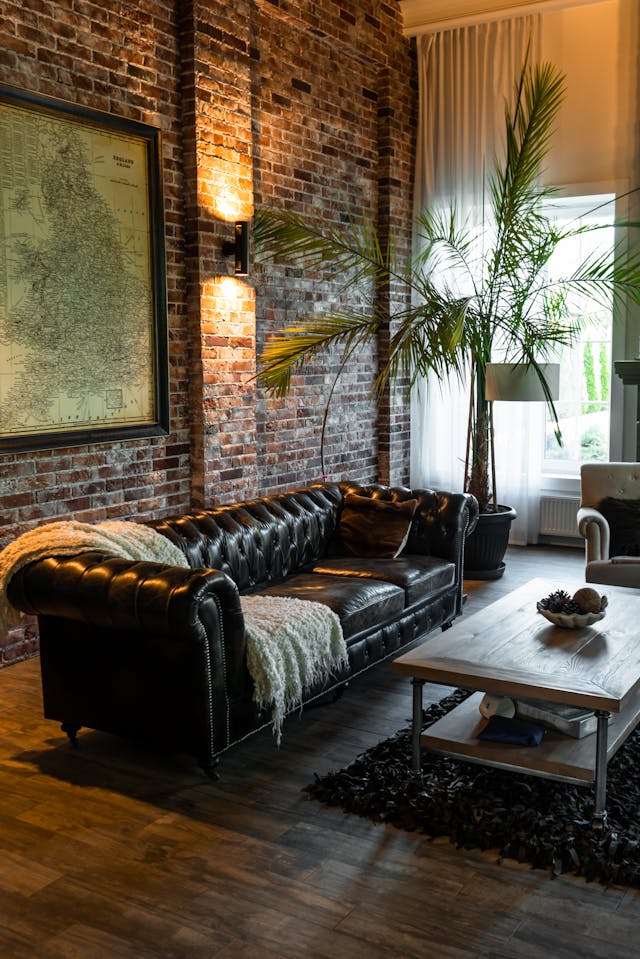
Industrial interior design styles celebrates the beauty of raw, unfinished elements. Originating from converted warehouses and factories, this style embraces exposed structural elements, metal finishes, and a rugged, utilitarian aesthetic.
I would say the beauty of industrial design lies in its honesty – nothing is hidden.
Key elements include:
- Exposed brick walls
- Metal and wood combinations
- Open floor plans
- Minimal window treatments
- Vintage or repurposed industrial equipment as decor
An industrial loft might feature concrete floors, exposed ductwork, metal shelving units, and furniture made from reclaimed wood and steel pipes.
6. Minimalist Interior Design Style
The Art of Less is More

Let me tell you a secret about minimalism – it’s not about living in an empty white box. It’s about intentionality, about creating spaces that breathe and allow your most cherished items to truly shine.
I’ve seen countless homes transformed by embracing this philosophy, where every piece tells a story and nothing is superfluous.
Minimalism is like a deep breath for your living space.
Think clean lines, monochromatic colour palettes, and a sense of calm that washes over you the moment you step into the room. It’s not about removing everything, but about carefully curating what truly matters.
Key principles include:
- Functionality as the primary design driver
- Neutral colour schemes (whites, greys, soft neutrals)
- Clutter-free surfaces
- High-quality, purposeful furniture
- Emphasis on negative space
Imagine a living room with a sleek white sofa, a single oversized abstract artwork, and large windows that flood the space with natural light. Each piece is carefully chosen, creating a sense of serenity and purpose.
7. Contemporary
Living in the Moment of Design

Contemporary design trend is like a chameleon – always adapting and always current.
Unlike modern design (which we’ll discuss later), contemporary interior design style is true of the moment.
It reflects the design trends happening right now, which means it’s constantly changing and evolving.
What makes contemporary design fascinating is its ability to blend different styles while maintaining a clean, sophisticated aesthetic.
It’s not afraid to mix materials, play with unexpected colour combinations, and challenge traditional design norms.
Defining characteristics:
- Curved lines and soft edges
- Neutral colour palettes with bold accent colours
- A mix of different textures and materials
- Emphasis on comfort and functionality
- Minimal yet statement-making furniture pieces
Picture a living room with a curved sectional sofa, sleek metallic side tables, and a large statement light fixture that looks more like a piece of art than a functional item.
8. Traditional
Timeless Elegance Reimagined

The traditional design is like a warm hug from your favourite grandmother – comfortable, familiar, and always welcoming.
It draws inspiration from 18th and 19th-century European decor, bringing a sense of sophistication and refined elegance to your home.
Personally, I love traditional interior design style for its attention to detail and its ability to create spaces that feel both luxurious and incredibly comfortable.
If you are looking for both a luxurious feel and an incredibly comfortable space, this interior design style is perfect for you. Personally, I love traditional interior design trend for its attention to detail.
The style is about symmetry, classic furniture pieces, and a sense of grandeur that never goes out of style.
Key elements include:
- Ornate architectural details
- Rich, deep colour palettes
- Matched furniture sets
- Elaborate window treatments
- Decorative mouldings and trims
- Antique or antique-inspired furniture pieces
Envision a dining room with a large mahogany table, matching chairs with detailed upholstery, crystal chandeliers, and heavy damask curtains that pool elegantly on the floor.
9. Farmhouse
Rustic Comfort Meets Modern Charm

Farmhouse style is more than a design trend – it’s a lifestyle. It’s about creating spaces that feel lived-in and comfortable and tell a story.
Think of it as a beautiful blend of rustic simplicity and modern convenience.
Unlike the traditional rustic style, modern farmhouse design brings a cleaner, more refined approach.
I believe this isn’t about perfectly styled spaces but about creating an environment that feels like home – with a touch of rural charm and modern sensibility.
Defining characteristics:
- Neutral colour palette (whites, creams, soft greys)
- Natural materials like wood and stone
- Vintage or reclaimed elements
- Shiplap walls
- Oversized, comfortable furniture
- A mix of modern and vintage accessories
Imagine a kitchen with white shaker cabinets, a large farmhouse sink, open shelving with vintage ceramics, and reclaimed wood island that serves as the heart of the home.
10. Eclectic
The Creative Rebellion of Design

Eclectic design trend is for the bold, the creative, the rule-breakers. It’s about throwing design rulebooks out the window and creating a space that is uniquely, unapologetically you. Think of it as a carefully curated controlled chaos that reflects your personality.
The magic of eclectic design lies in its ability to mix patterns, colours, and styles that traditionally wouldn’t work together. But when done right, it creates a space that is vibrant, dynamic, and full of life.
Key principles:
- No strict design rules
- Bold colour combinations
- Mix of different design styles
- Personal, meaningful accessories
- Unexpected design elements
- Balanced yet seemingly random arrangement
Picture a living room with a mid-century modern sofa, a Persian rug, African tribal art, a contemporary coffee table, and vintage industrial lighting – somehow, it all works together perfectly.
11. Rustic
Raw Natural Beauty

Rustic design is a love letter to nature’s raw beauty, bringing the warmth and authenticity of the outdoors into your living spaces. It’s more than just a design style – it’s a celebration of imperfection, natural materials, and the inherent beauty of unrefined elements.
Think log cabins, mountain retreats, and spaces that embrace imperfect, natural textures.
I must say rustic design trend isn’t about creating a perfectly polished environment but about capturing the essence of natural, unprocessed materials and creating a sense of warmth and comfort.
Core characteristics include:
- Natural, unfinished wood textures
- Stone and organic material integration
- Earthy colour palettes
- Handcrafted furniture pieces
- Textural, warm textiles
- Connection to natural landscapes
Visualise a living room with a rough-hewn wooden coffee table, a stone fireplace, leather armchairs with worn edges, and wool blankets that invite you to curl up and feel truly at home.
12. French Country
Romantic Pastoral Elegance
French Country design transports you to the picturesque countryside of Provence, blending sophisticated elegance with rustic comfort.
It’s a style that whispers stories of lavender fields, sun-drenched farmhouses, and timeless European charm.
This design approach is like a delicate dance between refined sophistication and comfortable simplicity.
It celebrates natural materials, soft colour palettes, and decorative elements that feel both elegant and lived-in.
Defining elements:
- Soft, muted colour palette
- Distressed wood furniture
- Ornate yet comfortable furnishings
- Natural materials like stone and wood
- Floral and toile patterns
- Vintage accessories and decorative items
Picture a kitchen with creamy white cabinets, a large farmhouse-style sink, copper cookware hanging from aged iron hooks, and soft blue-grey accents that evoke the gentle landscapes of southern France.
13. Coastal
Breezy Seaside Serenity

Coastal design is more than just a design style – it’s a lifestyle that captures the essence of seaside living.
Imagine the tranquillity of a beach vacation translated into your everyday living space, with colours, textures, and elements that evoke the calm and beauty of the ocean.
This design approach is about creating a sense of lightness, airiness, and connection to the natural marine environment. It’s not just about blue and white – it’s about capturing the essence of relaxation and natural beauty.
Key characteristics:
- Light, airy colour palette
- Natural textures like rope, driftwood, and linen
- Marine-inspired accessories
- Large windows maximizing natural light
- Soft, comfortable furnishings
- Organic, relaxed layout
I must say, envision one of your spaces with white shiplap (cladding) walls, light blue beachy accents, oversized linen sofas, nautical-inspired artwork, and large windows that bring in abundant natural light.
14. Modern Interior Design Style
Clean Lines and Functional Simplicity

Modern design trend is a testament to the beauty of simplicity, functionality, and clean geometric forms. Emerging in the early to mid-20th century, this Modern interior design style represents a radical departure from ornate, decorative design approaches.
It’s about stripping design down to its essential elements, celebrating the “form follows function” philosophy. Modern design is not about being cold or sterile but about creating spaces that are efficient, beautiful, and genuinely livable.
Defining characteristics:
- Geometric, clean lines
- Minimal ornamentation
- Open floor plans
- Innovative materials
- Neutral colour palettes
- Emphasis on functionality
For a real example, to decorate your living room, you can add a low-profile leather sofa, a glass coffee table, minimal artwork, and large windows that fade out the lines between indoor and outdoor spaces.
15. Shabby Chic
Romantic Vintage Elegance

Shabby Chic is like a beautiful love letter to vintage aesthetics, blending worn elegance with feminine softness.
The shabby Chic interior design style emerged in the 1980s, popularised by designer Rachel Ash-well, who transformed the concept of “worn” into something incredibly charming and intentional.
Imagine a space that looks like it has gracefully collected memories over generations – where every piece tells a story, and imperfections are celebrated as unique beauty marks. Shabby Chic is not about looking old but about creating a sense of lived-in romance and nostalgic charm.
Key characteristics:
- Soft, pastel colour palette
- Distressed and vintage furniture
- Feminine, romantic elements
- Vintage-inspired textiles
- Layered, soft textures
- Antique or antique-inspired accessories
Visualise a bedroom with a white-painted wooden bed, soft floral linens, vintage chandeliers, and delicate lace curtains that create a dreamy, romantic atmosphere.
16. Japandi
East Meets Minimalist West
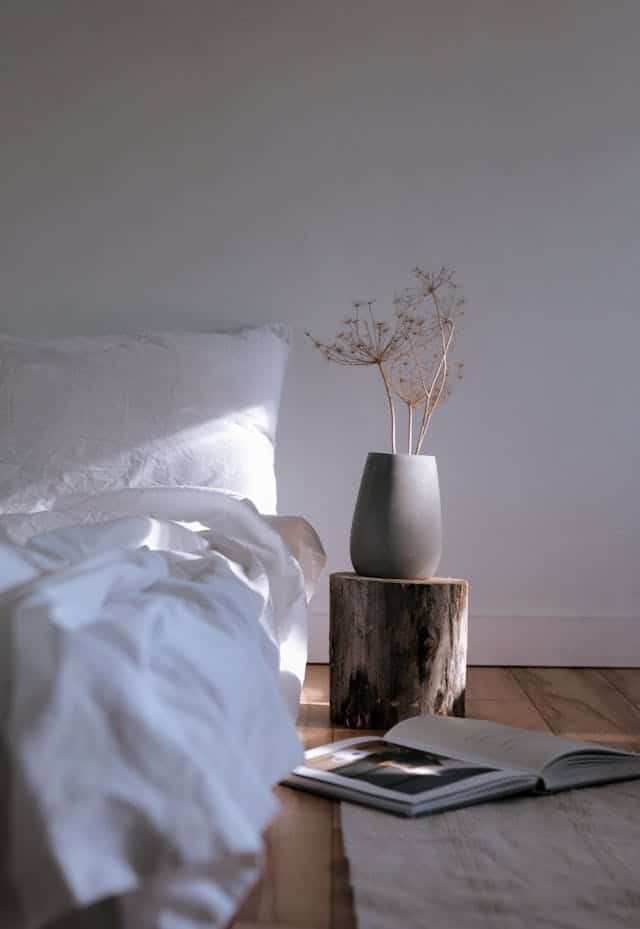
Japandi is the beautiful love child of Japanese and Scandinavian design philosophies – a perfect fusion of minimalism, functionality, and serene aesthetics. It’s about creating spaces that are both highly functional and deeply peaceful.
This style represents a perfect balance between the minimalist approach of Scandinavian design and the intricate craftsmanship of Japanese aesthetics. It’s less about decoration and more about creating harmonious, purposeful living spaces.
Core characteristics:
- Neutral, muted colour palette
- Natural materials
- Minimalist furniture design
- Emphasis on craftsmanship
- Functional, clutter-free spaces
- Organic shapes and textures
Imagine a living room with low-profile furniture, natural wood tones, handcrafted ceramics, minimal artwork, and a sense of spaciousness that invites calm and reflection.
17. Country Interior Design Style
Warm, Welcoming Simplicity

Country design trend is a celebration of rural charm, bringing the warmth and simplicity of countryside living into your home.
It’s about creating spaces that feel genuinely comfortable, unpretentious, and connected to natural elements.
Unlike the farmhouse style, which has a more modern twist, traditional country design is more about capturing the essence of rural living – think quilts, wooden furniture, and accessories that tell stories of family and tradition.
Key elements:
- Warm, earthy colour palette
- Natural wood furniture
- Handcrafted accessories
- Textural fabrics like quilts and woven textiles
- Vintage or antique decorative pieces
- Functional, comfortable furniture
Visualise a kitchen with wooden cabinets, a large farmhouse table, copper cookware, and quilted table runners that create a sense of warmth and hospitality.
18. Hollywood Glam
Vintage Luxury Reimagined
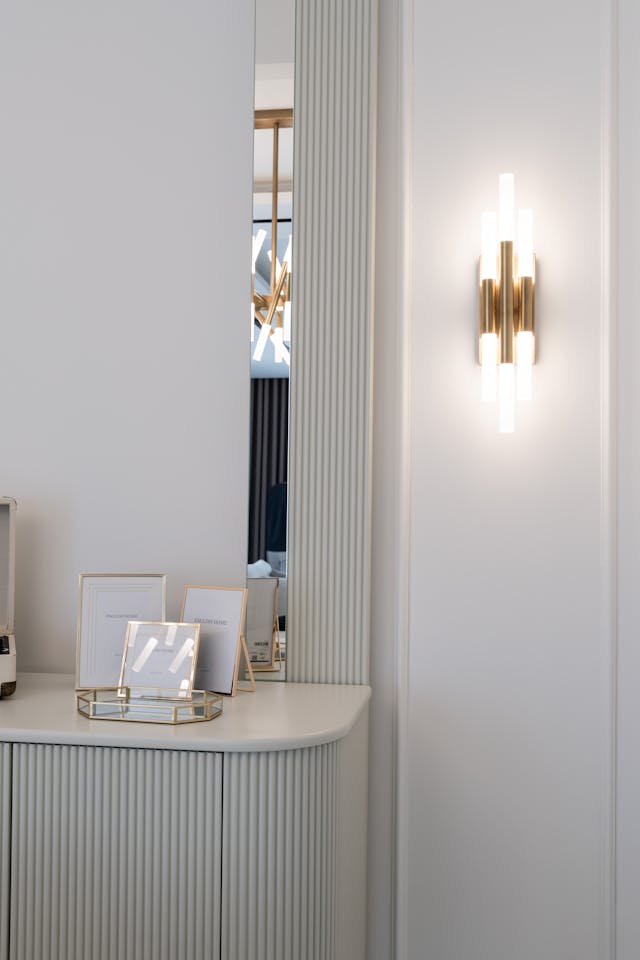
Hollywood Glam is the ultimate design style for those who love drama, luxury, and a touch of vintage Hollywood magic.
It’s about creating spaces that feel like a glamorous film set – bold, sophisticated, and unapologetically luxurious.
This style captures the golden age of cinema, bringing together opulent materials, bold colours, and statement pieces that demand attention. It’s designed as a performance, where every element is carefully choreographed for maximum impact.
Defining characteristics:
- Rich, bold colour palettes
- Luxurious materials like velvet and silk
- Gold and metallic accents
- Statement furniture pieces
- Dramatic lighting
- Vintage Hollywood-inspired accessories
Picture a living room with a deep emerald velvet sofa, gold-trimmed mirrors, crystal chandeliers, and bold artwork that captures the essence of old Hollywood glamour.
19. Regency Interior design Style
Royal Elegance and Opulence

Regency design trend is a celebration of aristocratic sophistication, drawing inspiration from the elegant period of British design during the early 19th century. It’s like stepping into a world of refined luxury, where every detail speaks of grandeur and meticulous craftsmanship.
This style is not just about decoration; it’s about creating an environment that exudes sophistication, luxury, and a sense of timeless elegance. Think of the most elegant royal palaces translated into a livable, contemporary context.
Key characteristics:
- Symmetrical design layouts
- Rich, bold colour palettes
- Ornate architectural details
- Luxurious fabrics like silk and velvet
- Elaborate mouldings and trims
- Statement furniture pieces
- Classical architectural elements
Imagine a dining room with deep emerald green walls, gold-leafed mirrors, a grand chandelier, and furniture with elegant curved lines and intricate detailing.
20. Urban Interior Design Style
Modern City Living Aesthetic
Urban design is the visual representation of contemporary city life – dynamic, flexible, and constantly evolving. It’s about creating spaces that are as multi-functional and efficient as the modern urban lifestyle demands.
This style is perfect for those living in apartments, lofts, or compact living spaces. The urban interior design style is all about maximising functionality in your space without sacrificing style, and creating environments that are both practical and aesthetically pleasing.
Defining elements:
- Compact, multi-functional furniture
- Industrial-inspired materials
- Neutral colour palettes
- Open floor plans
- Innovative storage solutions
- Minimalist yet sophisticated design
- Technology integration
Picture a small apartment with a Murphy bed that transforms into a workspace, concrete floors, exposed brick walls, and sleek, multi-functional furniture that adapts to different needs.
21. Classic
Timeless Sophistication

Classic design is the epitome of refined elegance, drawing inspiration from traditional European design principles. It’s about creating spaces that feel timeless, sophisticated, and eternally graceful.
This style is not about following trends but about establishing a design language that transcends time. Classic interiors are characterized by their balanced proportions, elegant details, and a sense of understated luxury.
Core characteristics:
- Symmetrical design layouts
- Neutral and elegant colour palettes
- High-quality, well-crafted furniture
- Architectural details like crown mouldings
- Formal furniture arrangements
- Refined accessories and artwork
- Emphasis on balance and proportion
Visualise a living room with a beautifully proportioned sofa, matched armchairs, a grand piano, and artwork that reflects refined taste and cultural sophistication.
22. Hampton Interior design Style
Coastal Elegance Meets Sophistication

Hampton style is the perfect blend of coastal relaxation and sophisticated design. Inspired by the luxurious beach houses of the Hamptons, this style creates spaces that feel both elegant and effortlessly comfortable.
It’s about capturing the essence of seaside living – bright, airy spaces that feel like a permanent vacation yet maintain a sense of refined elegance. Think crisp whites, soft blues, and natural textures that evoke the beauty of coastal landscapes.
Defining elements:
- White and blue colour palette
- Natural materials like linen and wood
- Large, open windows
- Nautical-inspired accessories
- Comfortable, oversized furniture
- Light, airy spaces
- Subtle coastal references
Picture a living room with white shiplap walls, blue and white striped upholstery, large windows overlooking the ocean, and natural wood elements that bring warmth to the space.
23. Modern Cottage
Rustic Charm Meets Contemporary Comfort

Modern Cottage design is a beautiful dance between traditional cottage warmth and contemporary design principles. It’s about creating spaces that feel both nostalgic and refreshingly current – a perfect blend of comfort and sophistication.
Imagine a home that captures the cozy essence of a countryside retreat while embracing clean lines and modern functionality. This style is for those who love the warmth of traditional cottage living but crave a more updated, streamlined approach.
Key characteristics:
- Soft, neutral colour palette
- Natural materials like wood and stone
- Clean, simplified architectural lines
- Comfortable, inviting furnishings
- Large windows maximising natural light
- Blend of vintage and modern elements
- Functional, open living spaces
Visualise a living room with white-painted wood panelling, a modern sectional sofa, vintage-inspired accessories, and large windows that flood the space with natural light, creating a bright and welcoming atmosphere.
24. Modern Organic
Nature-Inspired Design Harmony
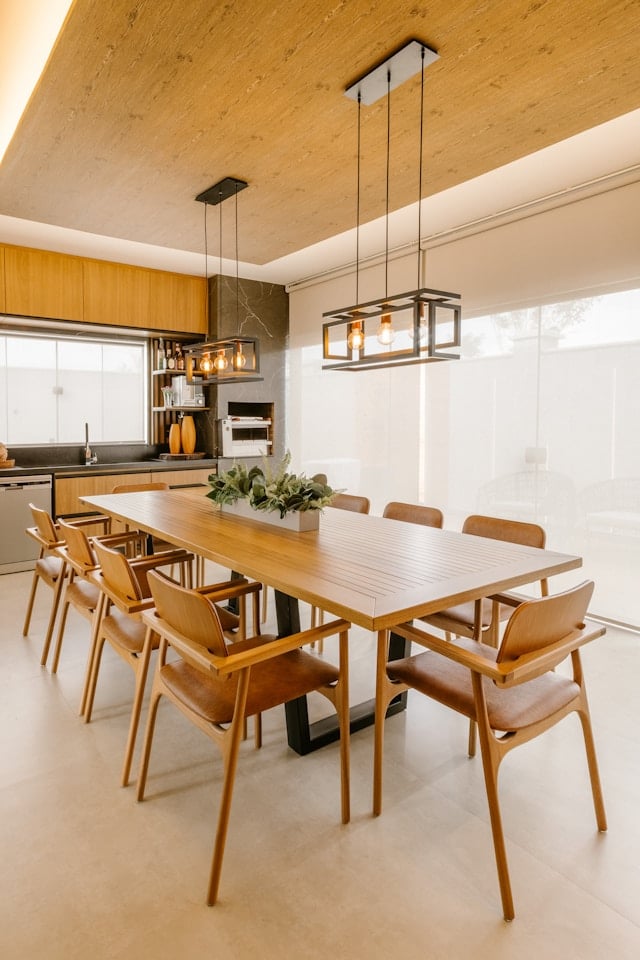
Modern Organic design is a celebration of the natural world, bringing the beauty of organic forms and natural materials into contemporary living spaces.
It’s about creating environments that feel connected to nature while maintaining a clean, modern aesthetic.
This style goes beyond mere decoration – it’s a philosophy of design that recognizes the human need for connection with natural elements.
Think of it as bringing the serenity of a forest or the calm of a rocky coastline into your living space.
Defining elements:
- Natural, sustainable materials
- Organic shapes and forms
- Earthy colour palette
- Abundant natural light
- Indoor plants and natural textures
- Minimalist yet warm design approach
- Emphasis on sustainability
To implement this design style into your living room, use furniture with curves, natural wood elements, large indoor plants, stone accents, and large windows with natural light to merge the line between indoor and outdoor spaces.
25. Maximalist Interior design Style
Bold Expression and Visual Storytelling
Maximalism is the ultimate design rebellion – a style that celebrates abundance, colour, and personal expression. It’s the complete opposite of minimalism, embracing the idea that more is more and every space tells a rich, complex story.
This design approach is for the bold, the creative, and the storytellers who believe that their living space should be a vibrant reflection of their personality. It’s about layering, collecting, and creating visual narratives that spark conversation and intrigue.
Core characteristics:
- Bold, saturated colour palettes
- Mix of patterns and textures
- Eclectic furniture and accessories
- Gallery-like wall displays
- Unexpected design combinations
- Personal, meaningful collections
- Dramatic design statements
Imagine a living room with jewel-toned walls, a mix of vintage and contemporary furniture, multiple artwork pieces, colourful rugs, and a collection of unique decorative objects that tell a personal story.
26. Indian Traditional
Rich Cultural Heritage in Design

Indian Traditional Design is a vibrant tapestry of colour, texture, and cultural storytelling. It’s not just a design style – it’s a celebration of centuries of artistic tradition, craftsmanship, and spiritual symbolism.
This design approach brings together intricate patterns, rich colours, and handcrafted elements that speak to India’s diverse cultural heritage. Each element tells a story, from hand-carved wooden furniture to intricate textile designs.
Defining elements:
- Vibrant, saturated color palette
- Intricate patterns and textile designs
- Traditional architectural elements
- Hand-crafted furniture and accessories
- Spiritual and cultural symbolic elements
- Natural materials like wood and stone
- Layered textures and decorative elements
Picture a living room with hand-painted walls, intricately carved wooden furniture, colourful silk cushions, brass decorative elements, and traditional textile artwork that creates a rich, immersive cultural experience.
27. Mediterranean
A Sun-Drenched Design Journey
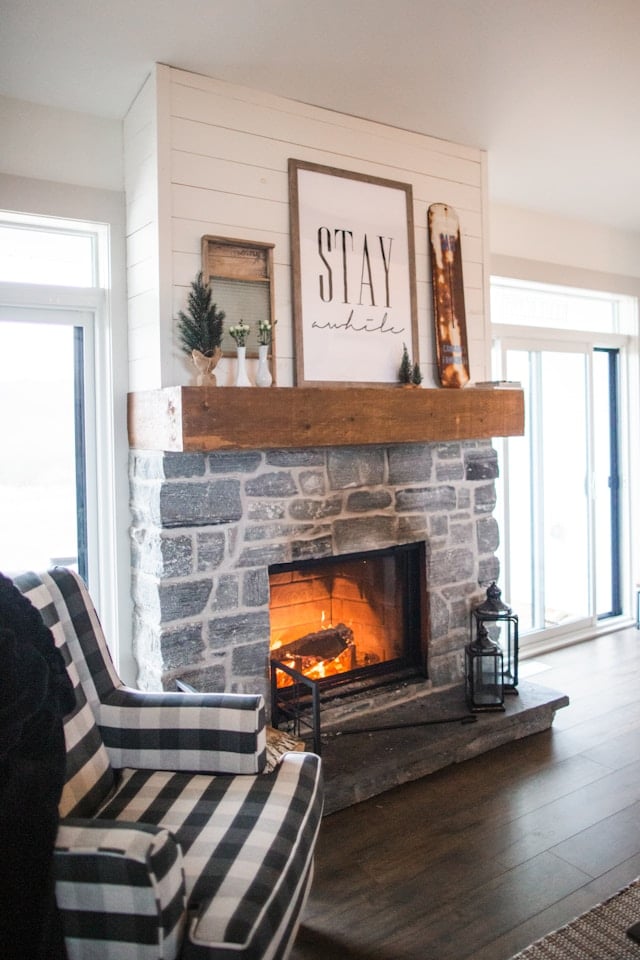
Mediterranean design is like a visual passport to the coastal regions of Southern Europe – a style that captures the essence of warmth, relaxation, and timeless beauty.
I must admit that Mediterranean design style space immediately transports you to the sun-soaked shores of Greece, Italy, and Spain, where design is an articulation of lifestyle and cultural richness.
This design approach is more than just an aesthetic – it’s a celebration of life, light, and the natural world.
Mediterranean interiors breathe with an open, airy feel that reflects the region’s love for outdoor living, vibrant colours, and natural materials.
Key Characteristics:
- Warm, earthy colour palette
- Terracotta and clay elements
- Textured walls resembling stucco
- Arched doorways and windows
- Natural stone and wooden elements
- Abundant natural light
- Decorative ceramic and mosaic details
Picture a living room with whitewashed walls, deep blue accents, terracotta floor tiles, wrought iron details, and large windows that flood the space with sunlight – creating an instant connection to Mediterranean coastal living.
28. Wabi-Sabi
The Beauty of Imperfection
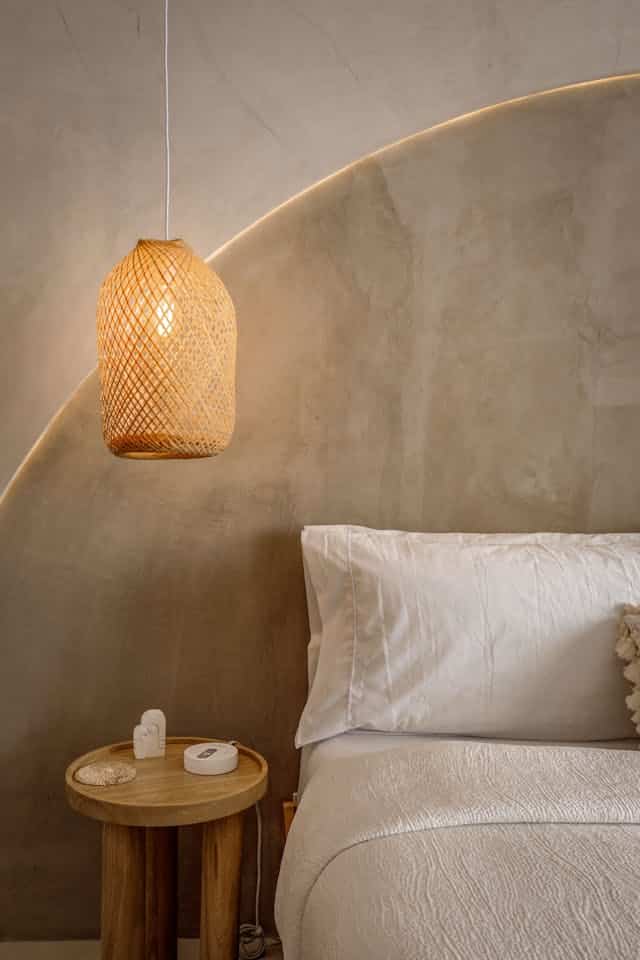
Wabi-Sabi is a profound Japanese design philosophy that finds beauty in imperfection, transience, and natural simplicity. It’s not just a design style – it’s a way of seeing the world that celebrates the beauty of age, wear, and natural evolution.
This approach is a radical departure from perfect, polished design. Wabi-Sabi teaches us to appreciate asymmetry, roughness, and the subtle marks of time. It’s about creating spaces that feel authentic, lived-in, and deeply connected to natural processes.
Core Principles:
- Embrace of natural imperfections
- Muted, earthy colour palette
- Handcrafted and irregular elements
- Natural materials in their raw state
- Minimalist yet warm aesthetic
- Celebration of aging and transformation
- Subtle, understated design elements
Imagine a living space with hand-thrown ceramic pieces with slight irregularities, weathered wooden furniture, natural linen textiles, and objects that tell stories of their journey and transformation.
29. Transitional
The Perfect Design Bridge
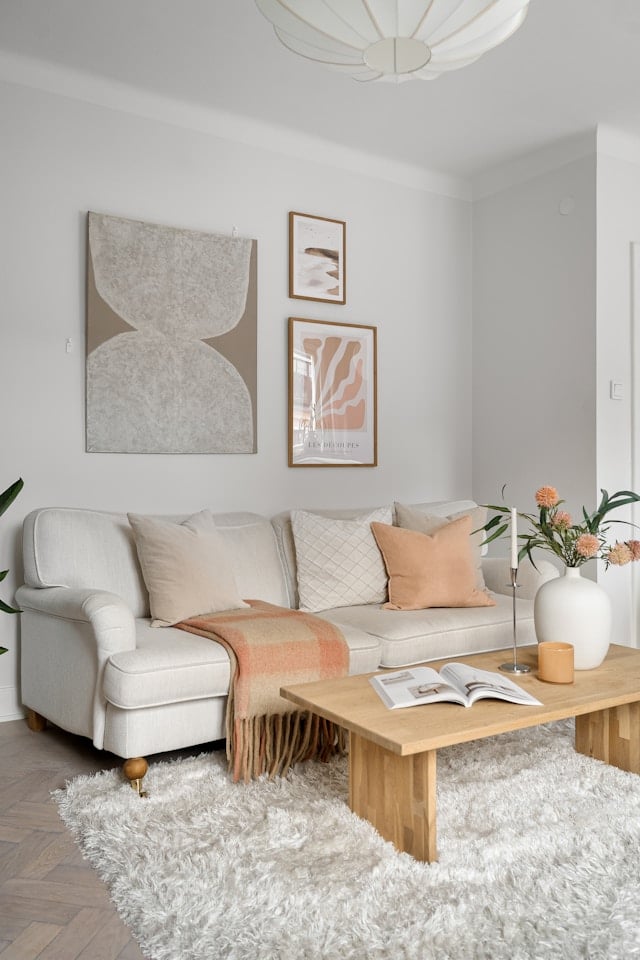
Transitional design is the ultimate design diplomat – seamlessly blending traditional elegance with modern simplicity.
It’s like finding the perfect middle ground between your grandmother’s cherished antique chair and a sleek contemporary sofa.
This style is perfect for those who feel caught between different design preferences. It offers a harmonious approach that respects classic design principles while embracing contemporary aesthetics.
Transitional design is about creating balanced, timeless spaces that feel both familiar and fresh.
Defining Elements:
- Neutral colour palette
- A mix of curved and straight lines
- The balance between ornate and simple
- High-quality, versatile furniture
- Subtle decorative elements
- Emphasis on comfort and functionality
- The clean yet sophisticated aesthetic
While decorating your living room in the transitional style, try to incorporate minimal artwork, a classic tufted sofa in a neutral tone that is paired with a modern glass coffee table, and carefully selected accessories that create a sense of refined balance.
Your Home, Your Canvas of Expression
Final thoughts on Interior design styles
After exploring these 30 incredible interior design styles, I’ve realised something profound: design is never about following rules but about telling your unique story.
Each style we’ve discussed is more than just a collection of furniture and colour palettes – it’s a language of personal expression.
Throughout my years of experience and as a design enthusiast, I’ve learned that the most beautiful spaces aren’t created by strictly adhering to a single style but by understanding the principles behind each approach and weaving them into something authentically yours. Your home is a living, breathing narrative of who you are – a canvas where memories, experiences, and personal aesthetics converge.
Think of design styles like ingredients in a recipe. You don’t have to follow one cookbook religiously.
Instead, experiment, mix unexpected elements, and create something that feels uniquely you. Maybe you’ll fall in love with the clean lines of Scandinavian design but want to inject the warmth of Bohemian textiles.
Or perhaps you’ll blend industrial elements with mid-century modern furniture. The magic happens in those unexpected combinations.
A few practical insights I’ve gathered over the years:
1. Start with what speaks to your heart. Don’t choose a style because it’s trending but because it resonates with your personal aesthetic and lifestyle.
2. Collect inspiration slowly. Create mood boards, save images, and observe spaces that make you feel something. Your perfect style will emerge naturally.
3. Give yourself permission to evolve. Your design preferences will change, and that’s beautiful. A home should be a reflection of your journey, not a static museum.
4. I recommend, you should invest in pieces that tell a story and long last. Search or look in the secondary market for vintage pieces or handcrafted/collected items from your travels, these findings add depth and personality to your space.
5. Remember that comfort trumps everything. The most stunning design means nothing if it doesn’t make you feel at home.
The most incredible interior designers I’ve met don’t just arrange furniture – they create experiences. They understand that a home is more than walls and objects. It’s a sanctuary, a personal retreat, a space that nurtures your soul and reflects your innermost self.
Be bold, be experimental, but most importantly, be authentically you. Your home should feel like a warm embrace, a place that tells your story without saying a word.
Design isn’t about perfection. It’s about connection – to your space, to your memories, and to yourself.






